Instrumentation Tools assists you a complete guide which mainly targets the aspirants of Electrical, Electronics and Instrumentation Streams to crack the interview.
Here’s a definitive list of Distributed Control System Interview Questions that will guarantee a sail-through to the next level as the guide been prepared in a strategic manner.
Distributed Control System Interview Questions
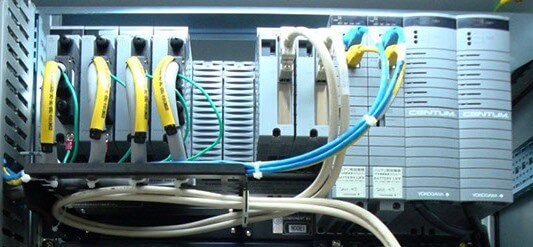
In case you have attended any competitive exams or interviews recently, or have additional questions beyond what we covered, we encourage you to post them in our Inst Forum to discuss about it further.
When Proportional (P) Controller is Used?
Proportional (P) Controller is used during the following conditions:
- Load Changes are small
- Offset (error exist due to difference between steady state value and desired value) can be tolerated
- The process reaction rate is such as to permit a narrow proportional band. Since this reduces the amount of the offset
When Integral (I) Controller is Used?
Integral (I) controller is used during:
- When the offset must be eliminated
- Integral saturation due to sustained deviation is not objectionable
When Derivative (D) Controller is used?
- Large transfer or distance velocity lags are present
- It is necessary to minimize the amount of deviation caused by the system changes
When Proportional plus Integral (PI) Controller is used?
Proportional and Integral action is employed when
- System changes is small
- Offset must be eliminated
- No objection on the recovery duration
When Proportional and Derivative (PD) controller is used?
PD action is employed when:
- When the system changes are small
- Improve the recovery time
- When system lags are high
When Proportional, Integral and Derivative (PID) Controller is used?
PID controller is used when system requires:
- System changes are small
- Offset must be eliminated
- Fast recovery time
How can we measure differential temperature?
Presently this is best achieved by using a smart temperature transmitter with two sensors transmitting a signal proportional to the temperature difference.
In split range control, whether the signal is split through the I/P convertor or the convertor itself?
This can be typically achieved by two ways:
By connecting o/p of one I/P converter to two positioners adjusted suitably for split range operation of control valves.
Taking two AO from DCS. Split range to be defined in DCS. Both I/P converters and positioners to be calibrated with input as 4to20 ma dc and 3to15 psi respectively.
When do we use the SOV of rating 110vac and 110VDC?
Primarily depends upon the availability of reliable power supply source & application.
What is the safest distance a control valve should be mounted from a pump discharging 60 bar pressure?
share answers through comments
How is cold junction compensation in thermocouples carried?
This is typically performed in modern programmable instruments by means of measuring actual reference junction temperature using a temperature sensor mounted close to the ref. junction and compensating for the same using appropriate look-up table stored within the instrument’s memory.
Also Read : Certified Automation Professional (CAP) Questions
In which applications do we use 4-wire RTD?
Three wire is a better alternative. Primary objective of 3-wire and 4-wire arrangements is to eliminate effects of lead resistance on temp. measurement.
What is the sensor used in the Coriolis mass flow meter to measure density?
Density is measured here by measuring the resonant frequency of a vibrating U-tube.
What if the thermocouple wire is opened in the field? What signal goes to DCS?
In most modern instruments the signal may be programmed to go to either maximum or minimum depending upon end user’s requirement.
What if the power supply connections to a two-wire transmitter get interchanged? What signal will go to DCS?
Usually there is a blocking diode to protect the transmitter against supply reversal and almost zero current signal should be transmitted.
What are the possible reasons for the failure of the barrier?
Fuse blowing sometimes. Power circuits are most likely to fail.
How can we say that the given RTD or Thermocouple is correct?
We can only measure sensor output (resistance / maillots ) accurately and look-up corresponding temperature in reference tables.
The accuracy depends upon quality / condition of the sensor. Degraded sensors may not give accurate readings and must be replaced.
To test a sensor, the sensor response may be tested using a high quality temperature calibrator and compared with reference tables.
In some cases, we have to select the cam position in a control valve for different applications. How do we select that?
Refer to instruction manual for the positioner / control valve. The cams are often marked with limited amount of information, which may help an experienced person.
What is the difference between a HART patch card and a field terminal assembly?
A field terminal assembly is a DCS component where field signals are terminated. In a DCS using analog transmitter signals but smart remotely configured transmitters field signals from barriers are first brought to a HART patch panel.
From here the analog signals are wired to the DCS field termination assembly or I/O card.
The digital signals are wired to the HART multiplexes who extract the digital information and provide two way communication path between smart instruments and a computer running suitable software.
What is the difference between a protocol and a field bus?
A protocol defines a standard method for communications.
A fieldbus is a multidropping arrangement where multiple instruments communicate with special interface hardware using the same pair of wires and in most of the cases draw power from the same pair of wires.
Explain the Open Loop Control System?
Control System in which output quantity has no effect on the input quantity is called Open Loop Control System. Open Loop Control System has no facility to correct automatically the error generated in the output.
From output of the system no feedback is given back to the input for correction. In Open loop control system the output can be varied by varying the input.
But due the external disturbance system output may change. Any variation in the output from the desired once again attained by varying the inputs manually.
Advantages:
- Open loop system is simple and economical
- Construction of open loop system is easier
- Open loop systems are generally stable
Disadvantages:
- Open loop systems are inaccurate and unreliable
- The changes in the outputs due to external disturbance are not corrected automatically
Explain Closed Loop Control System?
Control system in which the output has an effect on the input quantity in such a manner that the input quantity will adjust itself based on the output generated is called Closed loop Control System.
Open loop control system can be modified in to closed loop control system by providing a feedback. This feedback automatically corrects the changes in the output due to external disturbance.
Hence closed loop control system is called automatic control system.
Advantages:
- Closed loop control systems are more accurate even in the presence of non-linearities
- The sensitivity of the system may be made small to make the system more stable
- The closed loop systems are less affected by noise.
Disadvantages:
- Closed loop control systems are costlier and complex
- The feedback in the closed loop system may lead to oscillatory response
- The feedback reduces the overall gain of the system
- Stability is the major problem in the closed loop system and more care is needed to design a stable closed loop system.
What happens if transmitter wires get shorted?
The barrier if installed limits electrical energy flowing into hazardous area. If there is no barrier, typically a fuse in the power distribution system will blow.
What is an equi–potential connection (earth bonding)? How many types of such Connections are possible?
– Share Your Answer though comments
What will happen if thermocouple wires get shorted?
A cold junction compensated instrument will typically indicate temperature of the location where the T/C wires are shorted.
What is the difference between a ground terminal & protective ground terminal?
Share Your Answer through comments
Why do we require a loop-terminating resistor in any digital communication loop?
A minimum loop resistance is required so that modulated current signal produces a modulated voltage signal, which may be detected by the receiving equipment.
What is an adapter flange?
It is a transmitter part for allowing process connection to pipe/tube.
How to calculate the safe distance between cables to avoid electromagnetic interference from each other?
The design engineers / equipment manufacturers follow/publish certain guidelines w.r.t. different types of cables and the voltages/currents and types of signals carried by them.
How Control loop be tuned in the process loop?
You may use Ziegler-Nichol’s method ( open loop / closed loop ) or special tuning software tools.
What is the significance of single ended & differential ended input for PLC? Application wise comparison of these two types of inputs?
Differential inputs provide better common mode rejection and signal-to-noise ratio.
What is Ground Loop? Preventive steps to avoid ground loop?
When ground wiring is not done properly, grounding of various points is not effective and potential differences exist between them resulting in currents flowing between them.
This leads to measurement errors and is not desirable. It can be eliminated by proper ground wiring.
In a globe type control valve, what is the importance of flow direction (top to bottom or bottom to top)?
Control valves must be installed as per direction marking provided by the manufacturers or instruction manuals. Though people tend to generalize, this is often misleading.
What is ATEX directives / FM Approval / CSA approved / CE certified ? What is the importance of individual certification? Are all these certification required for each instruments? Which certification do we prefer?
ATEX/FM/CSA certifications generally refer to certification for suitability of instruments for use in hazardous area when installed in accordance with recommended guidelines.
Any certification, which is locally acceptable as per statutory requirements, may be used. We typically accept American/European/Indian certifications/approvals in India.
Advantages of tachometer as speed measuring device compared to inductive type proximity switches?
Some tachometers provide analog output with almost instantaneous response time.
They are highly suitable for speed control in some applications.
Application wise advantages of Inductive type proximity switches over capacitive type switches?
Inductive proximity switches are better suited for detection of conducting metal objects and are easily tested for proper operation.
Capacitive switches are typically used for detecting non-conductive materials
What are the accuracies and temperature ranges of the various thermocouples?
You can find out more about thermocouple accuracy and temperature ranges on this thermocouple color code table.
It is important to remember that both accuracy and range depend on such things as the thermocouple alloys, the temperature being measured, the construction of the sensor, the material of the sheath, the media being measured, the state of the media (liquid, solid, or gas) and the diameter of either the thermocouple wire (if it is exposed) or the sheath diameter (if the thermocouple wire is not exposed but is sheathed).
Should we use a grounded or ungrounded probe?
It depends on the instrumentation. If there is any chance that there may be a reference to ground (common in controllers with nonisolated inputs), then an ungrounded probe is required.
If the instrument is a handheld meter, then a grounded probe can almost always be used.
Can we use any multimeter for measuring temperature with thermocouples?
The magnitude of the thermoelectric voltage depends on the closed (sensing) end as well as the open (measuring) end of the particular thermocouple alloy leads. Temperature sensing instruments that use thermocouples take into account the temperature of the measuring end to determine the temperature at the sensing end.
Most millivoltmeters do not have this capability, nor do they have the ability to do non-linear scaling to convert a millivoltage measurement to a temperature value.
It is possible to use lookup tables to correct a particular millivoltage reading and calculate the temperature being sensed. However, the correction value needs to be continuously recalculated, as it is generally not constant over time.
Small changes in temperature at the measuring instrument and the sensing end will change the correction value.
How to choose between thermocouples, resistance temperature detectors (RTD’s), thermistors and infrared devices?
You have to consider the characteristics and costs of the various sensors as well as the available instrumentation. In addition, Thermocouples generally can measure temperatures over wide temperature ranges, inexpensively, and are very rugged, but they are not as accurate or stable as RTD’s and thermistors.
RTD’s are stable and have a fairly wide temperature range, but are not as rugged and inexpensive as thermocouples. Since they require the use of electric current to make measurements, RTD’s are subject to inaccuracies from self-heating.
Thermistors tend to be more accurate than RTD’s or thermocouples, but they have a much more limited temperature range. They are also subject to selfheating. Infrared Sensors can be used to measure temperatures higher than any of the other devices and do so without direct contact with the surfaces being measured.
However, they are generally not as accurate and are sensitive to surface radiation efficiency (or more precisely, surface emissivity). Using fiber optic cables, they can measure surfaces that are not within a direct line of sight.
Thermocouple Reference Tables
Thermocouples produce a voltage output that can be correlated to the temperature that the thermocouple is measuring. The documents in the table below provide the thermoelectric voltage and corresponding temperature for a given thermocouple type.
Most of the documents also provide the thermocouple temperature range, limits of error and environmental considerations.
Also Read: Questions on Standards & Field Instruments
If you liked this article, then please subscribe to our YouTube Channel for PLC and SCADA video tutorials.
You can also follow us on Facebook and Twitter to receive daily updates.
Read Next:

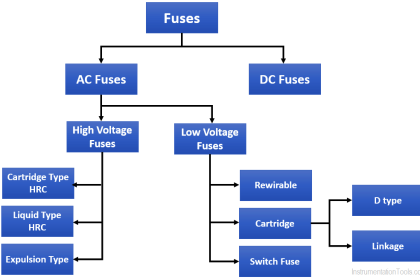


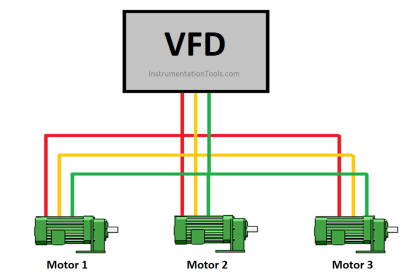

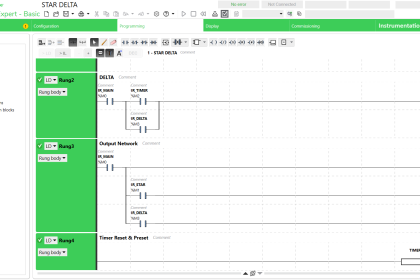
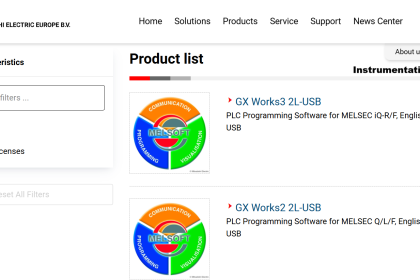
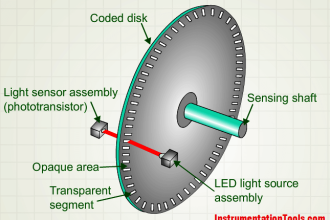
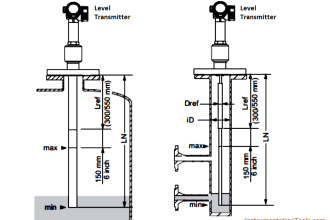

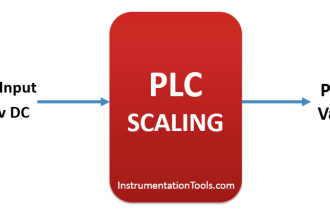



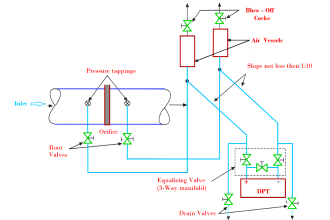

Where we have to know the dcs
good answers … i want learn DCS ..where coaching is avilable .
Yokagawa technical school at Bangalore, electronic city
i want to download q and answer in the form of pdf. how to download please help.
for pdf download go to print and change destination and save as pdf
Me also
simply
good document. thanks